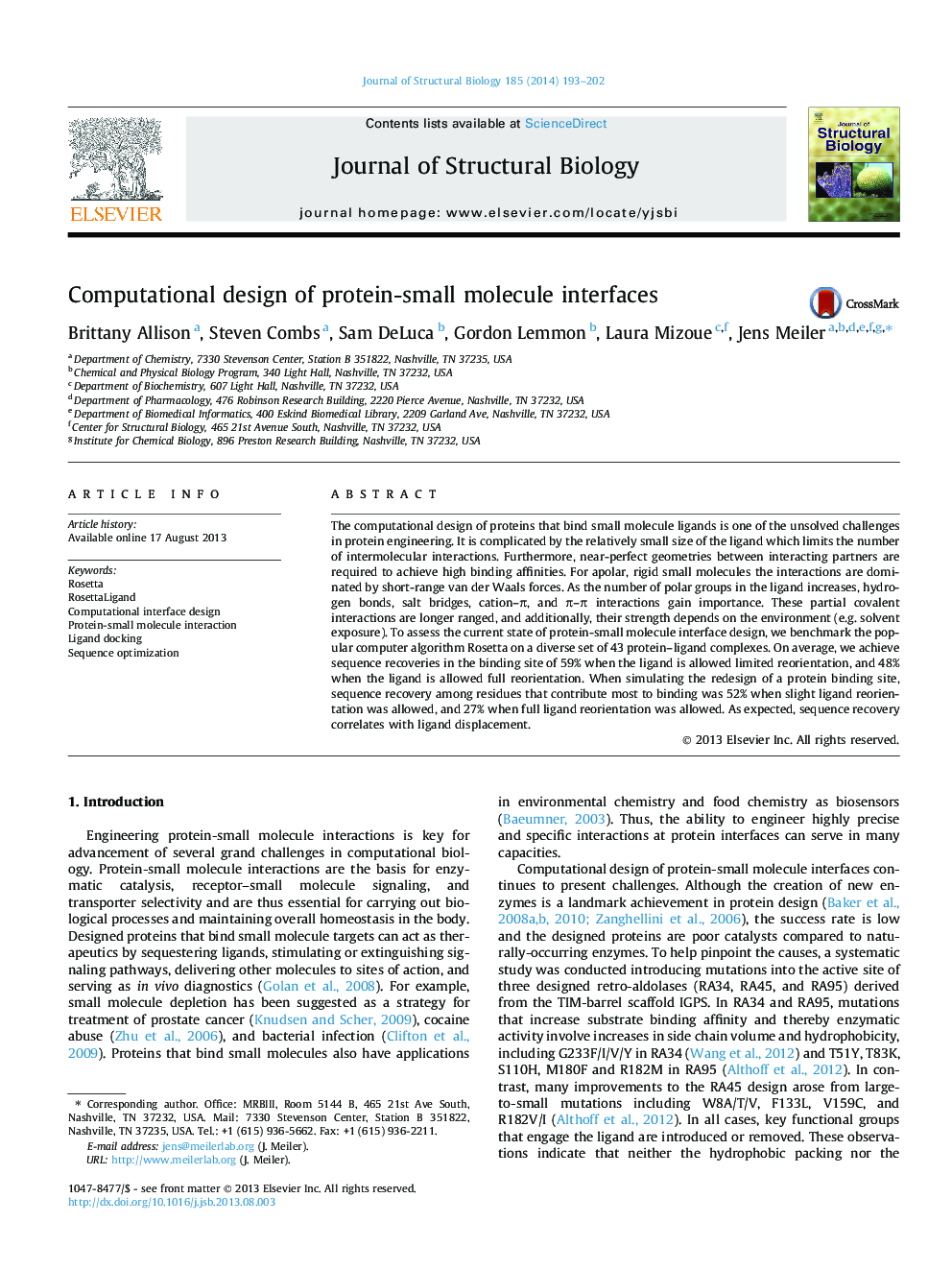| Article ID | Journal | Published Year | Pages | File Type |
|---|---|---|---|---|
| 2828504 | Journal of Structural Biology | 2014 | 10 Pages |
The computational design of proteins that bind small molecule ligands is one of the unsolved challenges in protein engineering. It is complicated by the relatively small size of the ligand which limits the number of intermolecular interactions. Furthermore, near-perfect geometries between interacting partners are required to achieve high binding affinities. For apolar, rigid small molecules the interactions are dominated by short-range van der Waals forces. As the number of polar groups in the ligand increases, hydrogen bonds, salt bridges, cation–π, and π–π interactions gain importance. These partial covalent interactions are longer ranged, and additionally, their strength depends on the environment (e.g. solvent exposure). To assess the current state of protein-small molecule interface design, we benchmark the popular computer algorithm Rosetta on a diverse set of 43 protein–ligand complexes. On average, we achieve sequence recoveries in the binding site of 59% when the ligand is allowed limited reorientation, and 48% when the ligand is allowed full reorientation. When simulating the redesign of a protein binding site, sequence recovery among residues that contribute most to binding was 52% when slight ligand reorientation was allowed, and 27% when full ligand reorientation was allowed. As expected, sequence recovery correlates with ligand displacement.
